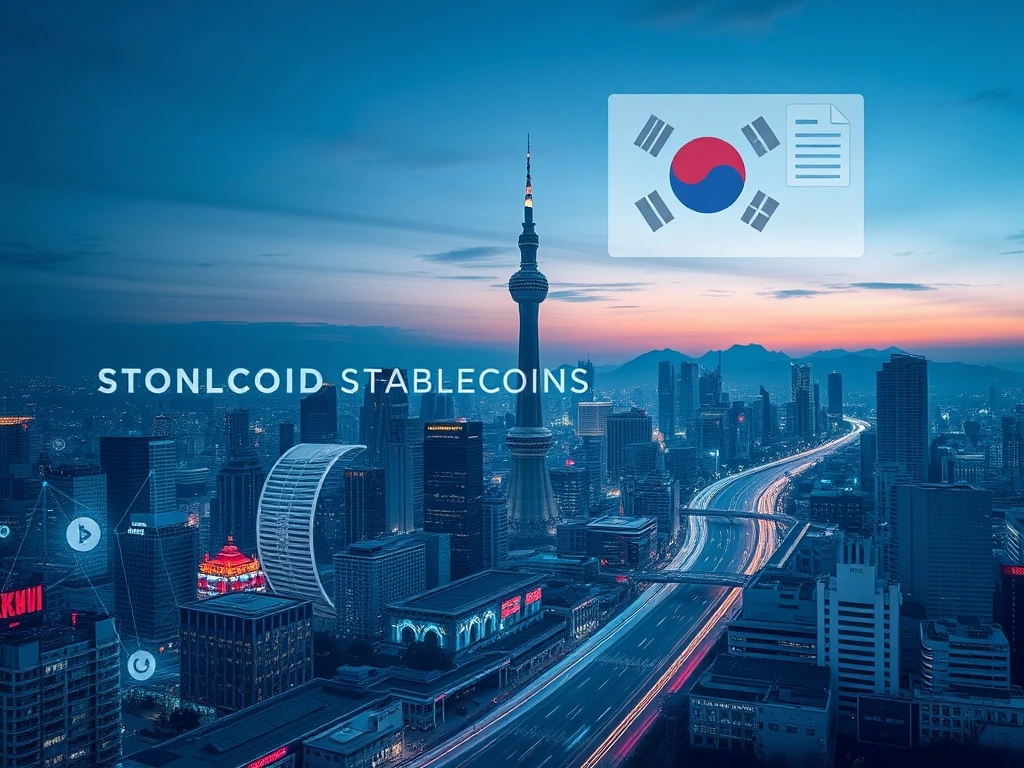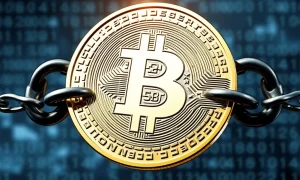South Korea is rapidly shaping the future of digital finance. This nation prepares a crucial regulatory framework for stablecoins, signaling a significant shift in its crypto landscape. This move directly impacts businesses and investors eyeing the burgeoning digital asset space. Furthermore, it underscores the government’s commitment to fostering a secure and innovative financial ecosystem.
South Korea Stablecoin Framework Takes Shape
The Financial Services Commission (FSC) is poised to introduce a government bill in October. This landmark legislation forms a vital part of the second phase of the nation’s Virtual Asset User Protection Act. Democratic Party of Korea (DPK) Representative Park Min-kyu confirmed the FSC’s policy direction on stablecoins during a recent policy debate. He clearly stated, “The government bill is expected to be submitted to the National Assembly around October.” This legislative effort marks a pivotal moment for digital asset regulation in the country, establishing clear guidelines for the burgeoning market.
The upcoming bill is expected to outline specific requirements across several key areas:
- Issuance Guidelines: Clear rules for creating and distributing stablecoins will be established, ensuring transparency and accountability from the outset.
- Collateral Management: Detailed standards for the assets backing stablecoins will be introduced. This aims to ensure stability and protect users from potential volatility.
- Internal Control Systems: Robust requirements for operational security and risk management will be mandated for all stablecoin service providers.
The FSC has diligently worked on this comprehensive framework since 2023. Its dedicated virtual asset committee aims to establish clearer rules for all crypto service providers operating within South Korea. This proactive and thorough approach underscores South Korea’s commitment to building a robust, secure, and compliant digital economy. It further demonstrates a strategic vision for integrating digital assets into the mainstream financial system.
Driving Won-Backed Stablecoin Adoption in South Korea
A primary goal of this new framework is to significantly reduce reliance on dollar-pegged stablecoins. While the United States ramps up its own stablecoin legislation, South Korea is playing catch-up, albeit with a unique focus. Institutionalizing won-pegged stablecoins gained significant traction following President Lee Jae-myung’s campaign pledge. Consequently, several influential lawmakers have since submitted related proposals to the National Assembly. These include the Digital Asset Basic Act from Representative Min Byung-deok, the Act on the Issuance and Circulation of Value-Stable Digital Assets from Rep. Ahn Do-gul, and the Act on Payment Innovation Using Value-Pegged Digital Assets from Rep. Kim Eun-hye. Each proposal highlights a growing consensus on the need for domestic stablecoin solutions.
Local industry stakeholders strongly advocate for a won-pegged South Korea stablecoin. They believe it is urgently needed to lessen dependence on dollar-based tokens, which currently dominate the global market. For instance, major South Korean banks teamed up in June. Their collaboration aims to develop a won-pegged stablecoin, a move designed to bolster the national currency against growing dollar dominance in the digital sphere. The banks anticipate this token will materialize in late 2025 or early 2026. This timeline indicates a strategic, long-term vision to enhance financial sovereignty and promote domestic digital asset innovation.
Global Stablecoin Market Dynamics and South Korea’s Position
The global stablecoin market remains heavily dominated by dollar-pegged assets. According to Real-world asset (RWA) tokenization tracker RWA.xyz, the total market value for stablecoins reached $266.7 billion as of August 17. Significantly, dollar-pegged stablecoins account for a staggering 99.8% of this market, totaling $266.2 billion. This data clearly highlights the substantial challenge and opportunity for South Korea stablecoin initiatives. The push for won-backed stablecoins represents a direct effort to diversify this market, fostering greater financial stability and potentially creating new economic avenues within the country. This strategic move could also inspire other nations to develop their own sovereign digital currencies.

Stablecoin market cap data. Source: RWAxyz
Broader Regulatory Landscape and Enforcement in South Korea
Beyond clarifying South Korea stablecoin rules, authorities in South Korea are also actively clamping down on tax evaders. Citizens using crypto to avoid paying taxes face increasing scrutiny from the government. On Monday, tax officials in Jeju City initiated decisive actions. They began freezing and seizing digital assets from users suspected of dodging tax requirements. Authorities diligently investigated nearly 3,000 individuals. These individuals were in arrears for approximately $14.2 million in unpaid taxes. The comprehensive investigation aimed to confirm if they held crypto assets that could be seized to settle their tax balances. This demonstrates a robust and comprehensive regulatory approach.
The government seeks to ensure compliance across all facets of the digital asset ecosystem. This includes both new frameworks for emerging assets like stablecoins and rigorous enforcement of existing tax laws. The proactive measures taken by South Korean authorities aim to foster a fair and transparent financial environment. They further solidify the nation’s position as a leader in responsible digital asset governance. These actions send a clear message: adherence to financial regulations is paramount, regardless of the asset class.
Conclusion:
South Korea is actively forging a robust regulatory environment for digital assets. The upcoming stablecoin framework represents a pivotal step in this journey. It aims to foster innovation while ensuring market stability and comprehensive consumer protection. Furthermore, continued rigorous enforcement against tax evasion underscores the nation’s unwavering commitment to a transparent and compliant crypto space. These combined efforts strategically position South Korea as a key player in global digital finance. The developments promise a clearer, more secure path for the future of South Korea stablecoin and wider cryptocurrency adoption, attracting both domestic and international investment.
Frequently Asked Questions (FAQs)
1. What is the primary purpose of South Korea’s new stablecoin framework?
The main purpose is to establish clear guidelines for the issuance, collateral management, and internal control systems of stablecoins. This aims to protect users, ensure market stability, and reduce reliance on foreign-pegged stablecoins, particularly dollar-pegged ones.
2. When is the stablecoin bill expected to be introduced to the National Assembly?
The government bill, as part of the second phase of the Virtual Asset User Protection Act, is expected to be submitted to the National Assembly around October.
3. Why is South Korea focusing on won-backed stablecoins?
South Korea is focusing on won-backed stablecoins to reduce its reliance on dollar-based stablecoin tokens, enhance financial sovereignty, and protect its national currency against the growing dominance of the U.S. dollar in the digital asset space. Political pledges and industry calls also drive this initiative.
4. How are South Korean authorities addressing crypto-related tax evasion?
Authorities in South Korea are actively freezing and seizing digital assets of individuals suspected of using crypto to evade taxes. For instance, tax officials in Jeju City investigated thousands of individuals and seized assets to settle outstanding tax balances.
5. Which government body is primarily responsible for developing this new stablecoin framework?
The Financial Services Commission (FSC) is the primary government body responsible for developing and introducing this new stablecoin framework, working through its virtual asset committee since 2023.
6. What is the current global market dominance of dollar-pegged stablecoins?
As of August 17, dollar-pegged stablecoins dominate the global market, accounting for 99.8% of the total stablecoin market value, which stood at $266.7 billion according to RWA.xyz data.
























